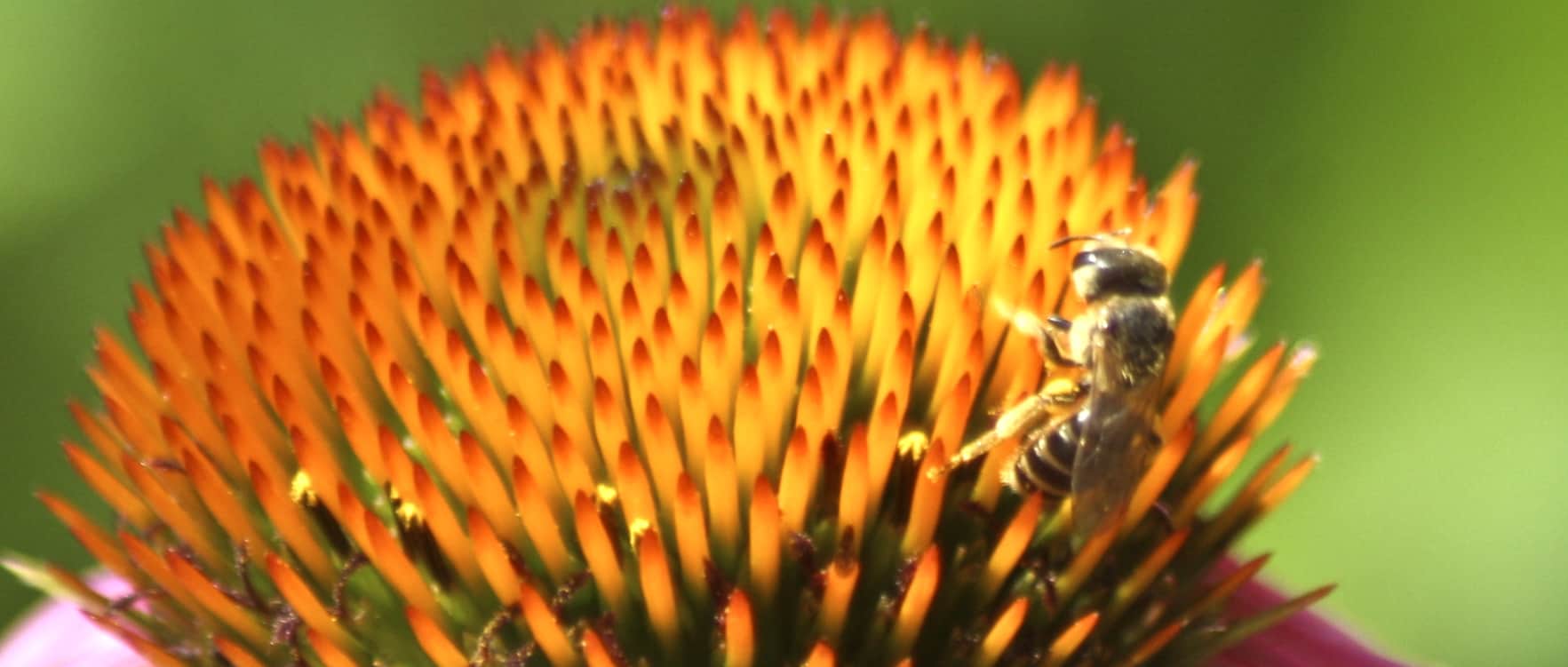Share this article
Flowers Aid in Spreading Parasites to Bees
Don’t be deceived by the vibrant colors and sweet-smelling petals. Flowers can be a host for parasites that are harmful to bees — if there aren’t enough of them planted, according to recent research.
“Flowers acted as a platform that retained bee parasites following bee visitation,” said Peter Graystock, a postdoctoral researcher in the Department of Entomology at the University of California, Riverside and the lead author in a new study published in the Proceedings of the Royal Society B. “Subsequent foraging bees then picked up these parasites and could both further spread these parasites to other flowers and also bring the parasites back in the hive.”
As part of the study, Graystock worked with professors William Hughes and Dave Goulson from the University of Sussex, England, to identify if flowers were involved in the transmission of parasites and to see if that dispersal could involve a variety of bees and parasites including non-host bees.
The team conducted experiments on honey bees and bumblebees, which suffer declines due to habitat change, pesticide use and parasite spread, to test the presence of four common parasites that infect both species including: Nosema bombi, which has been linked to the rapid decline of at least four species of bumblebees in North America, Nosema ceranae, a honey bee parasite that’s also found in bumblebees, Crithidia bombi, which infects bumblebees, and Apicystis bombi, which has caused bumblebee declines in South America and has been shown to spill over through commercial bumblebee hives.
For their experiment, the research team allowed either honey bees or bumblebees from hives containing parasites to forage on flowers for three hours. Then, the researchers removed the bees and introduced a new group of flowers and the other species of bees that wasn’t used previously. The new bees then foraged on both groups of flowers for three hours.
The researchers then sampled both sets of flowers to determine if there were parasites in them, and found that the parasites were present on both flower patches. They concluded both of the flowers used acted as parasite transmission hubs for the parasites that infect both bee species, and allowed transmission of parasites to occur without direct bee-to-bee contact, Graystock said.
While Graystock advises people to be wary when introducing bees to new areas and to regularly screen bees for parasites where possible, one of the ways to combat this transmission is simple — plant more flowers. “Planting more flowers would provide bees with more options, and parasite spread may thus be reduced,” Graystock said.
Flowers are like soda cans, Graystock explained. If you share a single can between 50 people, there’s a good chance the last person to take a sip will be getting a good dose of the germs from the people who drank from it before him/her. But if there are more cans available, like 10 to share among 50 people, then the last person to take a sip would only be exposed to the germs of four other people.
“I think it should be clear that flowers are vital for bees and that this research highlights the need for more flowers, which may ultimately reduce the likelihood of parasite spread — rather than thinking that flowers are bad per se,” Graystock said.
Header Image: A honeybee sits in a purple coneflower at the Northeast Regional Office in Hadley, Massachusetts. Researchers recently found that flowers can aid in the dispersal of parasites to both bumblebees and honey bees.
Image Credit: Jamie Weliver/USFWS








